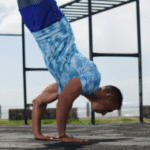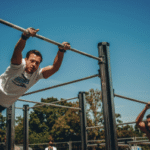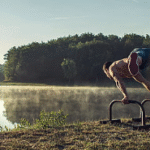Contrast Therapy for Athletes
Contrast Therapy for Athletes in detail, covering the science, application, benefits, evidence, and risks.
- What is Contrast Therapy?
Contrast Therapy, most commonly referred to as Contrast Water Therapy (CWT) in the athletic context, is a recovery modality that involves alternately immersing part or all of the body in hot water and then cold water. It’s a technique widely used in sports medicine and athletic training facilities aiming to accelerate recovery after strenuous exercise or competition.
- The Theory: Proposed Mechanisms of Action
Several physiological mechanisms are proposed to explain how CWT might benefit athletes, although some are better supported by evidence than others:
“Vascular Pumping” Theory: This is the most frequently cited hypothesis. The rapid switch between hot water (causing vasodilation – widening of blood vessels) and cold water (causing vasoconstriction – narrowing of blood vessels) is thought to create a “pump-like” action. This alternating change in vessel diameter is theorized to:
Increase overall blood flow to the muscles compared to static immersion.
Facilitate the removal of metabolic byproducts accumulated during exercise (like lactate, though lactate itself isn’t the primary cause of soreness).
Reduce exercise-induced edema (swelling) by promoting fluid movement out of the tissues and enhancing lymphatic drainage.
Pain Reduction (Analgesia):
Gate Control Theory: The strong sensations of hot and cold may stimulate sensory receptors that override or block pain signals traveling through the nerves to the brain.
Reduced Nerve Conduction Velocity: The cold phases temporarily slow down the speed at which nerves transmit pain signals.
Placebo Effect & Sensory Stimulation: The distinct and often intense sensations can distract from pain and contribute to a perception of recovery.
Reduction of Inflammation: The vasoconstriction during cold phases limits the delivery of inflammatory cells and mediators to exercised tissues. The alternating flow might also help clear existing inflammatory substances.
Altered Perception of Fatigue and Soreness: By reducing pain and possibly influencing inflammation, CWT may decrease the athlete’s subjective feeling of muscle soreness (including Delayed Onset Muscle Soreness – DOMS) and fatigue.
- How Athletes Typically Perform Contrast Therapy:
Setup: Requires two separate tubs, pools, or containers – one filled with hot water, the other with cold water.
Temperatures:
Hot Water: Usually maintained between 38°C and 44°C (100°F – 111°F). It should feel noticeably hot but tolerable without causing burns.
Cold Water: Usually maintained between 10°C and 15°C (50°F – 59°F). It should feel distinctly cold.
Procedure:
Starting Temperature: Often begins with immersion in hot water, but protocols can vary.
Immersion Ratio: Common ratios of hot-to-cold immersion times include 3:1 or 4:1 (e.g., 3 minutes hot followed by 1 minute cold) or sometimes 1:1 (e.g., 1 minute hot, 1 minute cold).
Cycles: This alternating pattern is repeated for several cycles.
Total Duration: The entire session typically lasts between 10 and 30 minutes.
Ending Temperature: Often ends with cold immersion, particularly if the goal is primarily inflammation control.
Area Treated: Can be applied to specific limbs (e.g., legs immersed after running) or involve whole-body immersion (up to the neck).
- Potential Benefits for Athletic Recovery:
Athletes use CWT hoping to achieve:
Reduced severity and duration of Delayed Onset Muscle Soreness (DOMS).
Faster perceived recovery between training sessions or competitions.
Decreased muscle fatigue and improved muscle function restoration (e.g., strength, power).
Alleviation of general exercise-induced muscle pain and aches.
Reduction in swelling and edema, especially after high-impact activities.
- The Scientific Evidence: What Research Shows
The scientific support for CWT is mixed and subject to ongoing debate:
DOMS and Perceived Recovery: Some systematic reviews and meta-analyses suggest that CWT can provide small to moderate benefits in reducing the severity of DOMS and improving subjective feelings of recovery compared to passive rest (doing nothing).
Muscle Function: Effects on the recovery of objective measures like muscle strength and power are less consistent across studies, with some showing benefits and others finding no significant difference compared to passive recovery or other methods.
Comparison to Cold Water Immersion (CWI): CWT is often compared to continuous cold water immersion (ice baths). There is no clear consensus that CWT is superior to CWI. Some analyses find CWI potentially slightly more effective for DOMS, while others find them comparable or CWT slightly better for certain specific outcomes. The choice may depend on individual tolerance and preference.
Mechanism Uncertainty: The popular “vascular pumping” theory lacks strong direct physiological evidence in humans confirming significant alterations in deep muscle blood flow or metabolic waste clearance beyond what occurs with active recovery or even CWI alone. The benefits observed might be more strongly related to analgesic effects (pain relief), placebo response, and reduced perception of soreness rather than major physiological flushing effects.
Inflammation Markers: Studies measuring inflammatory markers in the blood or tissue after CWT have yielded inconsistent results.
In summary: While CWT is popular and may help athletes feel better and perceive less soreness, its physiological benefits beyond pain modulation and placebo are not definitively proven, and it may not be superior to simpler methods like CWI or active recovery (light exercise) for all recovery aspects.
- Risks and Safety Considerations:
CWT is generally considered low risk when performed correctly, but precautions are necessary:
Temperature Extremes: Water that is too hot can cause burns; water that is too cold or immersion times that are too long can potentially lead to non-freezing cold injury or, very rarely, frostbite. Always check temperatures and limit duration.
Cardiovascular Stress: The rapid shifts in temperature cause changes in heart rate and blood pressure. Individuals with uncontrolled hypertension, significant heart disease, or circulatory problems (like peripheral vascular disease) should consult a physician before using CWT, especially whole-body immersion.
Contraindications: Avoid CWT over open wounds, skin infections, or areas with impaired sensation (e.g., diabetic neuropathy). Individuals with Raynaud’s disease or cold urticaria (allergy to cold) should avoid cold immersion.
Dizziness/Fainting: Can occur, particularly with whole-body immersion, due to blood pressure changes. Enter and exit tubs carefully.
- Practical Considerations:
Accessibility: Requires dedicated facilities with controlled hot and cold water tubs.
Timing: Typically implemented within the first few hours after strenuous exercise or competition.
Individual Response: Athletes have varying tolerances and preferences for temperature and recovery modalities.
Holistic Recovery: CWT should be viewed as just one potential component of a comprehensive recovery strategy that also includes proper nutrition, hydration, adequate sleep, active recovery, stretching/mobility work, and potentially other modalities like compression or massage.
Conclusion:
Contrast Water Therapy is a widely used recovery technique among athletes, involving alternating immersion in hot and cold water. It is theorized to enhance recovery primarily through a “vascular pumping” effect that may aid waste removal and reduce swelling, alongside pain relief mechanisms. While some studies support its use for reducing DOMS and improving perceived recovery compared to passive rest, the scientific evidence for its proposed mechanisms and its superiority over other methods like cold water immersion or active recovery is mixed and debated. Athletes considering CWT should perform it safely within recommended temperature and time guidelines, be aware of contraindications, and integrate it as one potential tool within their overall recovery plan, ideally under the guidance of athletic trainers or sports medicine professionals.

Contrast Therapy for Athletes
Route
Calisthenics Gym Houston Functional Bodyweight Training
Secondary phone: (346) 483-3195
Email: info@calisthenicsclubhouston.com
URL: https://calisthenicsclubhouston.com/
Monday 6:00 AM - 7:00 PM Tuesday 6:00 AM - 7:00 PM Wednesday 6:00 AM - 7:00 PM Thursday 6:00 AM - 7:00 PM Friday 12:00 PM - 6:30 PM Saturday 9:45 AM - 12:00 PM Sunday 3:00 PM - 5:00 PM





